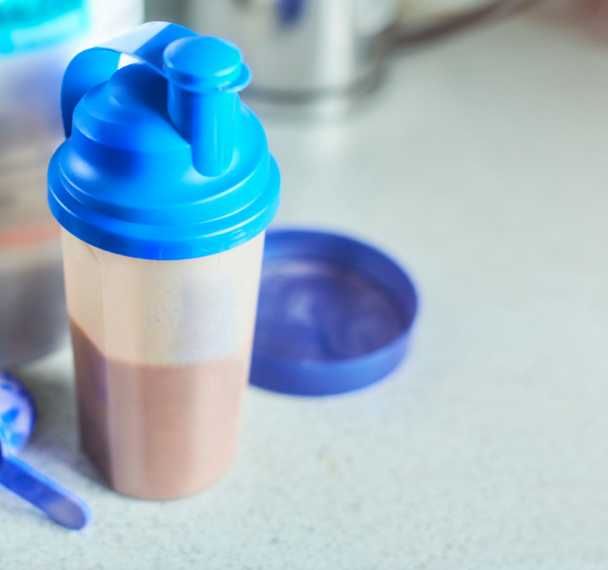Demystifying “Natural X Flavourings”: The Composition and Regulations Explained
Dec 05, 2023
Introduction
“Natural X flavourings” play a significant role in the food industry, providing an authentic taste and pictorial representation to various products.
However, their creation and usage are strictly regulated to prevent consumers being misled.
This blog post explores "Natural X flavourings," their regulatory framework, composition, and addresses their limitations and challenges.
We will also compare them to "Natural X flavouring with other natural flavourings" and extracts/essential oils, equipping you with the knowledge to make informed decisions when incorporating them into your products.
Note: Flavour regulations are continuously updated and vary across countries. In this blog, we only referred to the European legislations (1334/2008) also followed by the UK.
What is a “Natural X flavouring”?

Reminder of what a natural flavouring is
Natural flavourings are a combination of isolated natural flavour molecules, called natural flavouring substances, that are extracted or processed from vegetal, animal, or microbiological sources. These flavourings can be obtained only through traditional food processes.
Examples of natural flavour molecules include vanillin, which brings creaminess and sweetness to vanilla flavours, and ethyl butyrate, which adds fruity notes to fruit flavours.
Natural preparations, such as essences, extracts, oleoresin and essential oils, are also derived from vegetal, animal, or microbiological sources and obtained only through traditional food processes. Some examples include vanilla extract, mint extract, orange essential oil, cinnamon oleoresin, and strawberry juice concentrate.
A food-grade solvent is used as a carrier to blend the natural flavouring substances and natural preparations together.
One the main differences between natural flavours is the amount of natural preparations they contain:
🔸Extracts, essences, essential oils: 100% natural preparations
🔸Natural X flavouring: contain >95% natural preparations
🔸Natural X flavouring with other natural flavourings: contain <95% natural preparations
🔸Natural flavouring: Little or no natural preparations
Deep dive into “Natural X flavouring”
According to European regulations (1334/2008), a "Natural X flavouring", also known as FTNF (from the named fruit) or 95/5, must contain at least 95% of the named source material, excluding any solvents. This includes natural preparations and flavouring substances.
The remaining 5% can come from other sources and should only be used to adjust the flavour profile, such as adding jammy, ripe, or green notes.
It is important to note that the flavour of the named source material should come from the 95% portion, not the 5%. For example, it is not allowed to add 5% of natural vanillin, which is not extracted from vanilla beans, to provide the vanilla taste for a natural vanilla flavouring.
Furthermore, the flavour of the named source material should be easily recognisable by experts such as flavourists or a sensory panel.
It is permissible to name a "Natural X flavouring" with multiple source materials, as long as the combined weight corresponds to at least 95% and the flavour of all named sources can be easily identified. For example, "Natural raspberry and blackberry flavouring" is acceptable.
Additionally, food categories can be referenced using commonly understood terms by consumers. For instance, "Natural citrus flavouring," "Natural herbs flavouring," or "Natural red berries flavouring."
What can X be?
As mentioned in the previous chapter, natural preparations must be derived from vegetal, animal, or microorganism sources, either in their raw form or after undergoing traditional food preparation methods for human consumption.
Examples of these methods include chopping, cooking/baking (up to 240℃), drying, emulsification, extraction, maceration, percolation, and roasting/grilling.
The key point to remember is that the source of the material must be found in nature. For instance, you cannot have a "Natural brownie flavouring" or "Natural sugar flavouring". Instead, you can use "Natural cacao flavouring" or "Natural sugar cane flavouring".
Labelling option for food and drink products and pictorial representation
On the ingredient list, "Natural X flavouring" can be labelled as such, or "X flavouring," "Flavouring," or "Natural flavouring" (if the flavour is not recognised in the final food).
E.g. Natural strawberry and cranberry flavouring can be labelled as:
🔸Natural red berries flavouring
🔸 Strawberry and cranberry flavouring
🔸 Red berries flavouring
🔸 Natural flavouring
🔸 Flavouring
"Natural X flavouring" can be used for pictorial representation on food & beverage packaging with or without the presence of the corresponding ingredient. The key aspect is that the taste must primarily come from the depicted food.
Limitations and Challenges
"Natural X flavourings" are often perceived positively by consumers because they are derived from nature. However, there are several drawbacks associated with these flavourings.
The main problems with “Natural X Flavouring” arise from their reliance on crop and climate changes. A significant example is the devastation caused by a hurricane a few years ago that destroyed the majority of vanilla plantations in Madagascar, resulting in a severe scarcity of vanilla beans.
As a result, this became a significant challenge for the entire supply chain. Unfortunately, similar problems are expected to increase in the future.
Additionally, “Natural X Flavouring” have a limited range of flavour selection as not all flavour molecules can be obtained naturally, especially those with nutty, biscuity, or wheaty profiles. These flavours are either prohibitively expensive or not accessible within the confines of legislation.
Moreover, due to the nature of the source materials used, many "Natural X Flavourings" have a low flavour intensity, requiring higher dosages. "Natural X Flavouring" works best for citrus and spices which naturally have intense taste profiles.
With only 5% remaining in the flavour composition, customisation options for this type of flavouring are limited.
Lastly, the sustainability aspect is a concern as the production of natural preparations used mainly in "Natural X Flavouring" demands large amounts of food sources, generates waste, and has a low to medium yield rate.
Difference with a “Natural X flavouring with other natural flavourings” and extracts/essential oils

“Natural X flavouring with other natural flavourings”
“Natural X flavouring with other natural flavourings”, commonly known as WONF, refers to natural flavouring that contains less than 95% of the flavouring component derived from the named source material.
This means that additional natural flavours, whether they are natural flavouring substances or natural preparations, from different sources have been included.
Similarly to "Natural X flavouring," the named source material(s) are present and their distinct flavour can easily be recognised.
"Natural X flavouring with other natural flavourings" is permitted for pictorial representation on food and beverage packaging if it contains at least 51% of natural preparation from the named source material.
"Natural X flavouring with other natural flavourings" can be used for pictorial representation on food & beverage packaging with or without the presence of the corresponding ingredient. The key factor is that the taste must come mainly or entirely from the depicted food.
On the ingredient list, “Natural X flavouring with other natural flavourings”, can be labelled as such or as “X flavouring”, “Flavouring”, or “Natural flavouring” if the flavour is not recognised in the final food.
E.g. Natural strawberry flavouring with other natural flavourings can be labelled as:
🔸 Strawberry flavouring
🔸 Natural flavouring
🔸 Flavouring
Extracts & essential oils
If the flavour accounts for 100% from the named source material, other denominations may be used such as X extract or X essential oil.
"X extracts" and "X essential oils" can be used for pictorial representation on food & beverage packaging with or without the presence of the corresponding ingredient. The key is that the taste must be primarily derived from the depicted food.
Conclusion
In the ever-evolving food and beverage industry, "Natural X flavourings" play a crucial role in providing a sense of "naturality" and “authenticity” to consumers. This stems from the increasing demand for natural products, driven by prevalent health and wellness trends, as well as a growing curiosity about the ingredients and processes behind what consumers eat and drink.
However, there is a lack of clarity among consumers regarding the term "natural". The definition of "natural" varies, encompassing ideas such as being "chemical-free," "freshly made," "traditional," "homemade," and "healthy."
In reality, even "Natural X flavourings" are composed of chemical substances created through chemical processes, which may deviate significantly from what consumers consider "natural."
It is important to recognise that "Natural X flavourings" are not as straightforward as they may appear. They come with limitations and challenges, including environmental impact, reliance on climate change, limited availability and customisation options.
Furthermore, the regulatory framework surrounding these flavourings is stringent, necessitating businesses to stay informed about current legislation.
As we continue to explore and appreciate natural flavours, let us also remember to do so responsibly, considering not only our taste buds but also the well-being of our planet.
Remember, flavour regulations are perpetually updated and vary across countries. Therefore, always refer to the most recent legislation applicable to your region. In this blog post, we focused on the European legislations (1334/2008) also followed by the UK.
Link to related blogs you may enjoy
🔶Flavourings Unwrapped: What is a flavouring?
🔶Unleashing the Zest: Exploring the World of Citrus Essential Oils
🔶 What is a flavouring with modifying properties (FMP)?
🔶 Demystifying Flavour Masking: Techniques for Balancing and Covering Unpleasant Tastes & Flavours
References
Previous experience includes working at a flavour house, where I received comprehensive flavour trainings.
European flavour association (EFFA) https://effa.eu/eu-legislation/flavouring-legislation
British Society of Flavourists https://www.bsf.org.uk/
European legislations: Flavouring Ingredients EC (1334/2008) https://www.legislation.gov.uk/eur/2008/1334/contents








